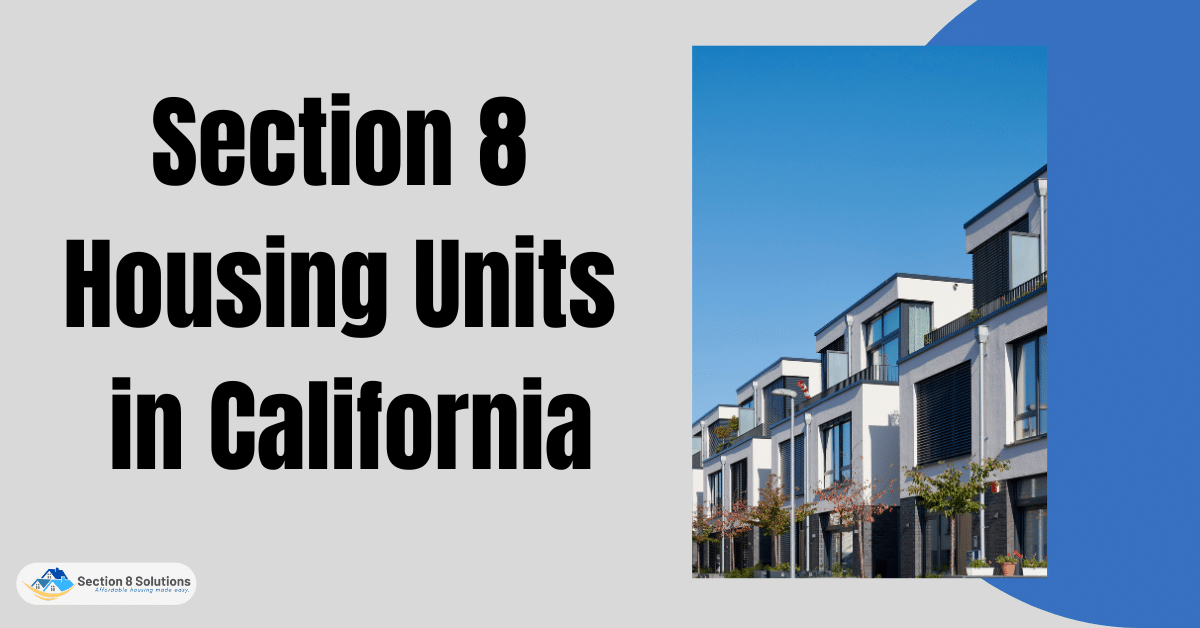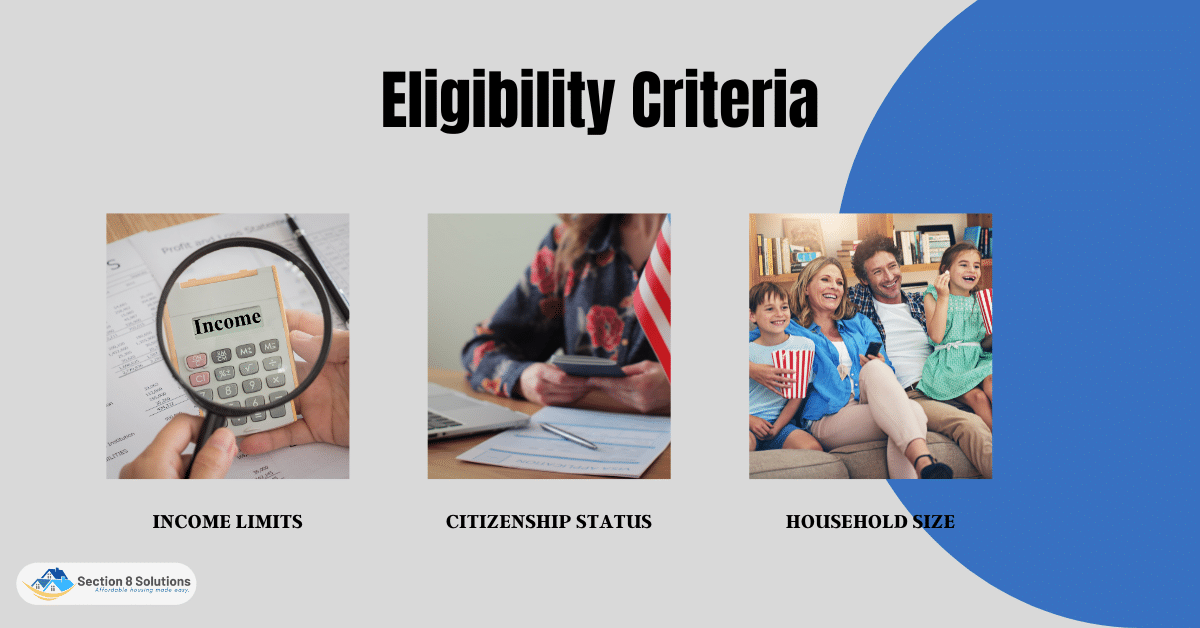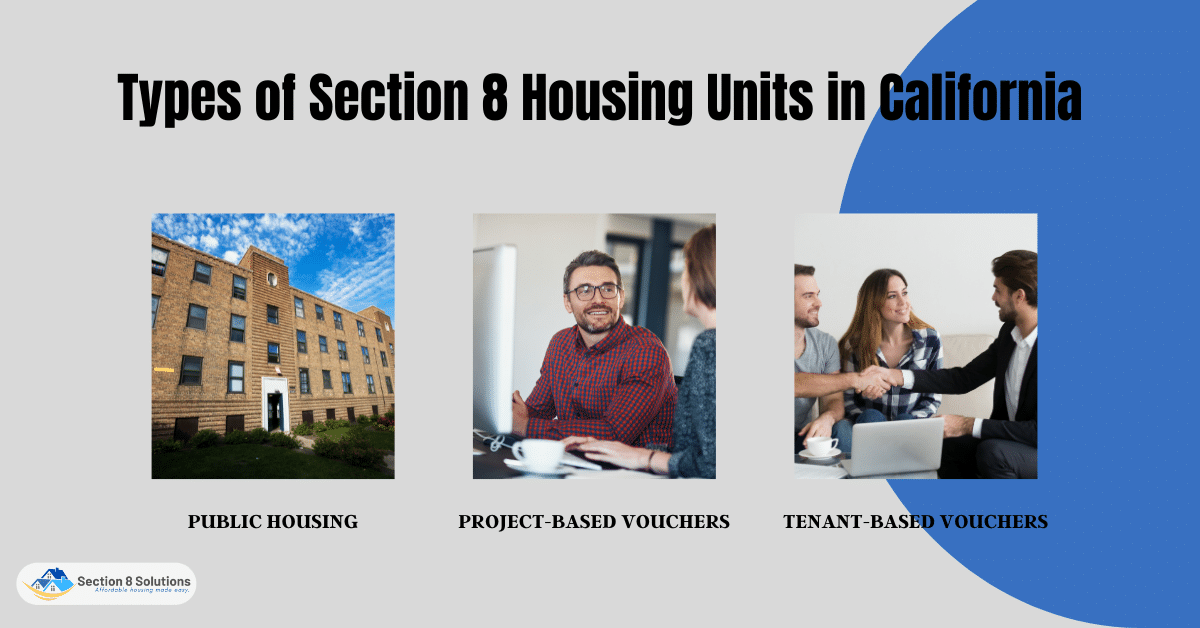Section 8 housing in California helps low-income families afford housing. These government-financed apartments help qualified families afford safe, adequate housing. Section 8 housing helps many Californians afford a roof and basic necessities due to the high cost of living.
In the following sections, we will delve into the eligibility criteria, application process, benefits, and challenges associated with Section 8 housing units in California.

The Significance of Section 8 Housing in California
California’s housing affordability issue is crippling disadvantaged neighborhoods and families. The state’s high cost of living and few affordable housing alternatives have generated a large income-housing gap. Section 8 housing helps the needy in this desperate scenario.
California’s affordable housing need is clear from statistics. The California Housing Partnership reports that 1.5 million low-income families spend more than half their income on rent, leaving little for other necessities. The state’s 1.3 million affordable housing shortage worsens the problem.
Amidst this crisis, Section 8 housing emerges as a lifeline for vulnerable populations. By subsidizing a portion of the rent, the program bridges the affordability gap, enabling low-income individuals and families to secure safe and decent housing. Through its rental assistance vouchers, Section 8 housing provides stability and alleviates the burden of unaffordable rent payments.
Eligibility Criteria
HUD and local housing agencies decide California Section 8 housing eligibility. The program has income, citizenship, and family size requirements.

- Income limits: Section 8 housing is primarily intended for individuals and families with low incomes. Eligibility is determined based on the applicant’s annual gross income, which must fall below a specified threshold set by HUD.
- Citizenship status: To be eligible for Section 8 housing, applicants must be U.S. citizens or have eligible immigration status. Documentation to prove citizenship or immigration status may be required during the application process.
- Household size: Household size determines Section 8 eligibility. The number of people in the home, including family and dependents, determines eligibility and voucher size.
Remember, the process and requirements may vary slightly depending on the local housing authority. It is essential to stay informed and be proactive in understanding and fulfilling the eligibility criteria to increase the chances of successfully obtaining Section 8 housing assistance.
Application Process for Section 8 Housing in California
The application process for Section 8 housing in California involves several steps to determine eligibility and secure a housing voucher. Below is a step-by-step guide to help you navigate the process effectively:
1. Research and Locate Your Local Housing Authority
Start by conducting an online search using keywords such as “Section 8 housing authority [your city or county name].” This search should provide you with the contact information and website of the relevant housing authority. Visiting their official website will give you access to accurate and up-to-date information regarding application procedures, eligibility requirements, and any specific instructions that you need to follow.
2. Gather the Required Documents
Before beginning the application, gather the necessary documents. These may include identification (such as birth certificates or social security cards), proof of income (pay stubs, tax returns), proof of residency, and documentation of any special circumstances (such as disability or veteran status). Ensure all documents are current and readily available.

3. Complete the Application Form
Fill out the Section 8 housing application form accurately and completely. Provide details about your household, including names, birthdates, and relationships to the primary applicant. Be thorough and double-check for any errors or omissions. Keep a copy of the completed application for your records.
4. Submit the Application
Submit your completed application to the local housing authority by the designated method (mail, online, or in-person). Follow any specific instructions provided by the housing authority regarding submission requirements, deadlines, and supporting documentation.
5. Wait for Application Processing
Housing authorities assess applications. Demand may slow this review. Income, family size, and other variables will determine your housing authority eligibility. They will notify you if your application is missing information.
Following these procedures and remaining educated throughout the application process will help you get California Section 8 housing assistance. Be patient, communicate with the housing authorities, and consult local resources or nonprofits if required.

Types of Section 8 Housing Units in California
Section 8 housing in California encompasses various types of units designed to cater to the diverse needs of low-income individuals and families. These types include public housing, project-based vouchers, and tenant-based vouchers. Each option offers unique features and benefits.

1. Public Housing
Public housing units are owned and operated by local housing authorities. They are typically apartment complexes or townhouses that provide affordable housing exclusively for low-income individuals and families. Rent for public housing units is set at a percentage of the household’s income, making it more affordable. Specific regulations and guidelines are determined by the local housing authority overseeing the property.
2. Project-Based Vouchers
Project-based vouchers are tied to a specific rental property rather than an individual or family. These units are privately owned, and a portion of the rent is subsidized by the Section 8 program. Eligible households can apply directly to the property owner or management company to secure a unit. Rent calculations are based on the household’s income, and specific guidelines and regulations are set by the local housing authority.

3. Tenant-Based Vouchers
Housing Choice Vouchers, or tenant-based vouchers, provide families with greater housing options. Tenant-based voucher holders may find private rental apartments that match program standards. The housing authority pays part of the rent directly to the landlord, while the renter pays depending on income. Local housing authorities regulate tenant-based vouchers.
It’s important to note that the availability of each type of unit may vary across different areas of California due to factors such as demand and local housing market conditions. Additionally, specific regulations and guidelines associated with each type may also vary slightly among different housing authorities in the state.

Benefits and Supportive Services Provided by Section 8 Housing
California Section 8 housing provides more than inexpensive housing. The main benefit is rental assistance, which helps qualified people and families afford safe, adequate housing in communities they may not have been able to afford otherwise. Section 8 housing provides secure surroundings and affordability.
Residents feel safer and crime drops. Stability and assistance enable upward mobility in the program. Affordable housing allows participants to spend more on school, job training, and career development, improving skills, higher education, and earning potential. Section 8 housing provides job training, education, and healthcare in addition to rental assistance.
Local collaborations include counseling, childcare, financial literacy, and career training. These comprehensive programs empower families, enhance their well-being, and enable self-sufficiency and long-term success. Section 8 housing in California gives stability, hope, and economic housing with support services.

Challenges and Future Outlook for Section 8 Housing in California
Section 8 housing in California struggles to fulfill the rising demand for affordable housing due to many issues. Funding is an issue. Federal money is inadequate to offer rental assistance to all qualified families. Long waiting lists and inadequate affordable homes have exacerbated the state’s housing dilemma.
Unaffordable housing is another issue. California’s high housing costs and lack of affordable housing stock generate a demand-supply gap. Finding adequate accommodation under Section 8’s rent guidelines is difficult.
California is expanding affordable housing projects to address these issues. This involves boosting Section 8 money and working with private landlords to develop affordable housing. Public-private partnerships help use existing housing and build new affordable homes.
California Section 8 housing has bright prospects. Low-income individuals need stable homes, thus the state invests in affordable housing projects. Funding and strategic collaborations seek to minimize housing voucher wait times and program burden. Mixed-income projects and affordable housing incentives may also increase Section 8 unit availability.

Conclusion
Section 8 housing in California helps solve the affordable housing issue and provides safe, adequate homes for low-income families. Despite budget constraints, a lack of affordable apartments, and extensive waiting lists, initiatives are ongoing to tackle these difficulties. To expand affordable housing, the state is investing and partnering.
Section 8 housing in California has a bright future with an emphasis on finance, private landlord relationships, and creative solutions. Section 8 housing may help vulnerable groups, decrease homelessness, and improve Californians’ quality of life by prioritizing affordable housing and improving the program. Section 8 housing must be maintained to provide secure, affordable homes for the needy.










